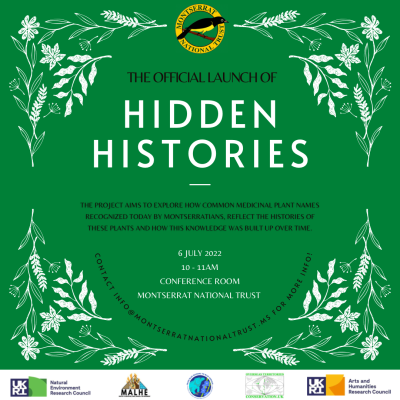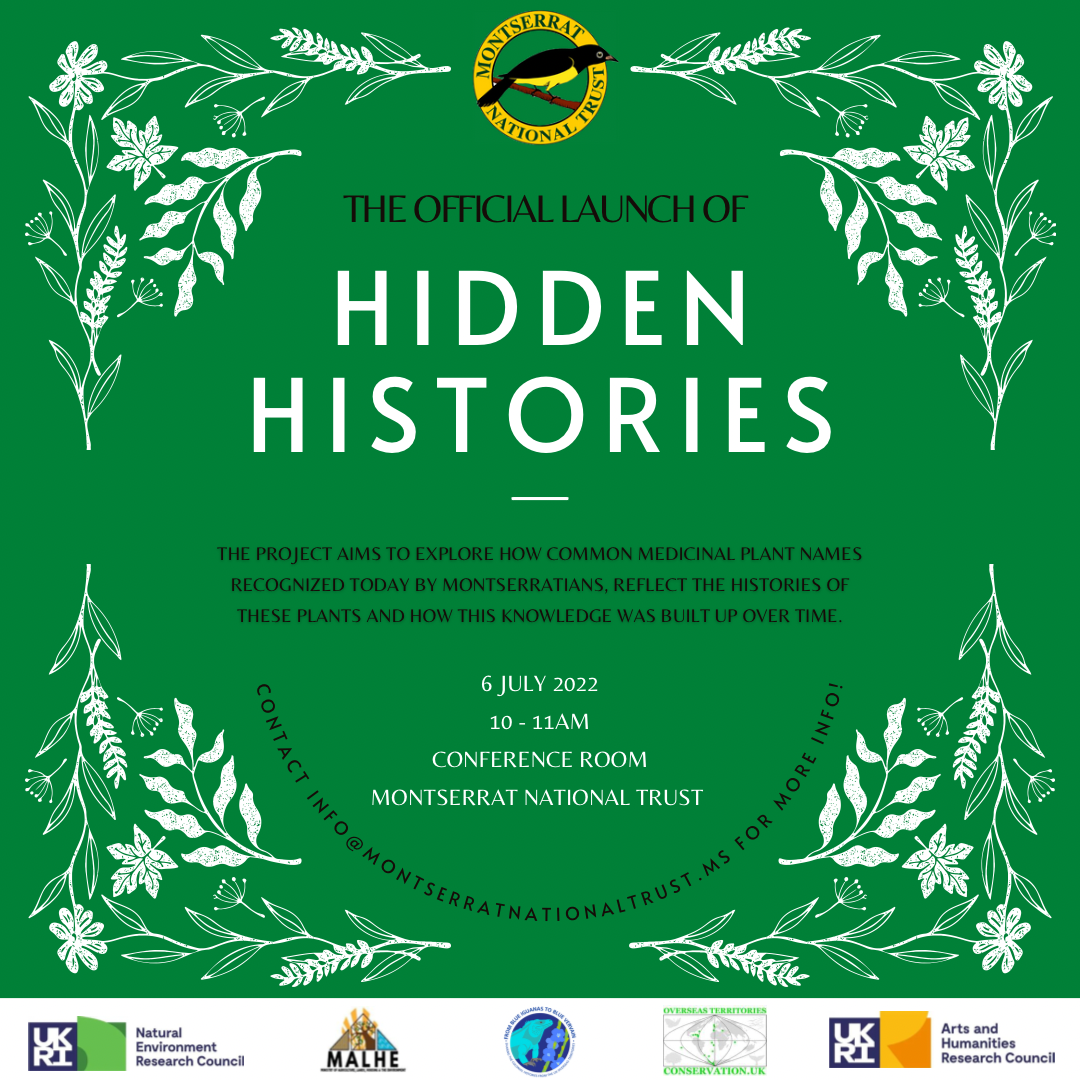Shining a light on the past to shape future nature conservation efforts, are the aims of a new project launching on the 6th July at the Montserrat National Trust’s botanic garden. Part of the Hidden Histories programme, on Montserrat, it will look at the fascinating history behind ‘weeds and bush’, medicinal non-native plants, including blue vervain, which have been a traditional part of life for hundreds of years.
This new project launched in February 2022, aims to shine a light on the impact on the natural and cultural environment of colonial history in two UK Overseas Territories; focusing on non-native invasive species in the Cayman Islands and the medicinal use of non-native plants on Montserrat.
The flora of Montserrat includes many plants with medicinal properties. The traditional use of these plants on the island originate from shared histories between the Amerindians and enslaved peoples. Over a quarter of the medicinal plants (“weed and bush”) found on Montserrat are from the “Old World”. Some weeds are categorised as invasive, but some were also lifelines for Montserratians to cope with the violence of plantation life and colonialism. The project aims to maintain knowledge across the community of Montserrat (including school children, general public, medicinal plant practitioners, environment officers, farmers and herbalists). It will explore how common plant names recognised today by Montserratians reflect the histories of the plants and how this knowledge was built up over time. Sharing knowledge of the use and importance of these plants will help both local communities and researchers in the UKOTs and UK understand how best to help Montserratians protect their natural and cultural heritage.
Mrs Sarita Francis, Executive Director of the Montserrat National Trust said:
“The project will carve a way forward to empower local communities to safeguard biodiversity for the next generations, while making a significant contribution to global conservation efforts. It will also look at the hidden stories behind what ecosystems look like today in the hope that this informs our understanding of research and nature conservation in the UK Overseas Territories beyond 2022. In addition, the project will focus on biological data collections, their availability and will explore how these can be more accessible to guardians of biodiversity and cultural heritage across the UKOTs.”
The consortium, led by the UK Centre for Hydrology and Ecology, includes: The National Trust for the Cayman Islands, The Montserrat National Trust, The Montserrat Ministry of Agriculture, Land, Housing and Environment, Meise Botanic Gardens, Belgium; Leeds Museum and the UK Overseas Territories Conservation Forum. [2]
Catherine Wensink, Executive Director of the UK Overseas Territories Conservation Forum said:
“As a long-term partner to the UKOTs, we are delighted to contribute to this exciting project, and are pleased to welcome others in supporting conservation in the UK’s Overseas Territories. Within the UK, the UKOTs are too often regarded as “out of sight and out of mind”, especially in funding, public perception and media coverage. Most of the globally important biodiversity for which the UK is responsible, under international conventions, occurs only in the UKOTs. They are estimated to hold over 90% of the UK biodiversity and have high levels of species found nowhere else on Earth. We welcome this funding from the UK Research Councils, which we hope will set out a long-term funding opportunity for meaningful research in the UKOTs which underpins conservation efforts.”
Funding is provided under the United Kingdom Arts and Humanities Research Council (AHRC) and the Natural Environment Research Council (NERC) as part of the call: “Hidden Histories of Environmental Science: Acknowledging legacies of race, social injustice and exclusion to inform the future”.


